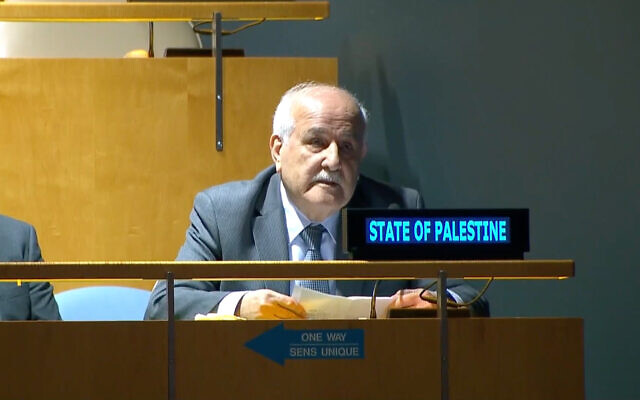The importance of rapidly halting tropical deforestation to achieve net-zero emissions was a key message at this year’s climate summit, but corporate efforts to this end have stalled for decades.
December 31, 2022 by Mongabay

By Sarah Sax
The importance of rapidly halting tropical deforestation to achieve net-zero emissions was a key message at this year’s climate summit, but corporate efforts to this end have stalled for decades.
Cattle, soy and palm oil are the main commodities driving deforestation and destruction of other important ecosystems. Zero-deforestation commitments from the companies that trade in those commodities are seen as an important way to reduce deforestation globally.
A new study compares the effectiveness of corporate commitments to reduce soy-related deforestation in the Brazilian Amazon and Cerrado, showing that zero-deforestation commitments can reduce deforestation locally, but only if there is widespread adoption and implementation among both small and big soy traders.
Overall, the study points to the limitations of relying just on supply chain agreements to reduce regional deforestation and protect biodiverse ecosystems, and highlights the need for strong public-private partnerships.
At the recently concluded COP27 climate summit in Egypt, 14 major agricultural commodity companies, including Cargill, ADM and JBS, released a plan to end deforestation associated with the production of soy, palm oil, beef and cacao by 2025. It was an important announcement from some of the largest traders of agricultural commodities: after the burning of fossil fuels, agriculture is the biggest contributor to global greenhouse gas emissions. Cutting down forests for pasture and oil palm plantations, or plowing up savannas to plant soy is a key driver not just of climate change but is also primarily responsible for the biodiversity crisis and at the heart of violent and deadly conflicts over land.
The road map was swiftly criticized by environmental groups, who said that not only were the commitments not ambitious enough, but that they also gave companies carte blanche to continue deforesting until the cutoff date with no repercussions.
“The roadmap’s insistence that individual companies undertake best efforts to establish individual cut-off dates for deforestation no later than 2025 means the bulldozers will keep running and the destruction will continue,” Mighty Earth, a global environmental advocacy organization, wrote in a statement.
For critics of the announcement, there’s a sense of frustration at the same companies that have been promising to end deforestation for years, with little to show to date. In 2010, more than 400 companies promised that their supply chains would be “zero net deforestation” by 2020. None of the companies met that goal, according to The New York Times.
In 2014, dozens of large agricultural commodity trading companies joined the New York Declaration on Forests, pledging to end the conversion of natural forests and to restore 350 million hectares (865 million acres) of degraded forest by 2030 — an area larger than India. But little progress has been made since then, according to Corporate Knights magazine.
Separately, a slew of new studies is trying to discern both what is required to make such zero-deforestation commitments effective and the limitations they face. A new study published in Environmental Letters on Oct. 28 adds to this debate, assessing the effectiveness of soy zero-deforestation commitments in Brazil and their limitations. The authors found that soy traders in the Amazon who had signed on to the Amazon Soy Moratorium, the first sectoral-wide zero-deforestation commitment, were able to more than halve deforestation in municipalities where the majority of soy traders had also signed up.
Had companies with zero-deforestation policies for soy implemented their commitments with the same effectiveness in the neighboring savanna biome, the Cerrado, as in the Amazon, they could have reduced direct deforestation from soy by 46% and avoided around 5% of overall deforestation between 2006 and 2015 in the Cerrado. Instead, the area converted to soy production in the Cerrado has more than doubled over the past 20 years, threatening an important global carbon stock and reservoir of water for the country, as well as thousands of traditional and Indigenous communities impacted by soy expansion.
“The findings draw attention to two key gaps in corporate sustainability efforts by trading companies in the soy sector: The many smaller companies who have not yet made sustainable sourcing commitments, as well as the larger traders who have made commitments, but only partially implement them,” Erasmus zu Ermgassen, a researcher at Louvain Catholic University in Belgium, who was not involved in the study but works with commodities-tracking platform Trase to improve the transparency and sustainability of supply chains, told Mongabay by phone. “The authors also highlight that the soy sector cannot tackle deforestation on its own. Cross-sectoral collaboration is essential, so that deforestation for soy is tackled alongside other drivers of deforestation, including cattle ranching and land speculation.”
‘They can make a difference’
After cattle, soy is one of the biggest drivers of land-use change in South America. Worldwide, 8.2 million hectares (20.3 million acres) of forest were replaced by soy crops between 2001 and 2015, almost all of them in South America. And demand is only growing. Soy production in Brazil is projected to expand by 12.4 million hectares (30.6 million acres) from 2021 to 2050, with most of this in the Cerrado, the world’s most biodiverse savanna that is at the forefront of Brazil’s agricultural expansion.
Using data from Trase to look at the supply chains of soy-trading companies in the Amazon and Cerrado biomes, the study compared deforestation in municipalities where the majority of soy traders buying soy had zero-deforestation commitments, to those dominated by companies without zero-deforestation commitments. They found that traders in the Amazon were able to reduce deforestation by 57% in municipalities where more than half of the buyers had a zero-deforestation commitment.
“This paper shows that implementing zero-deforestation commitments is not homogenous across space,” study co-author Kimberly Carlson, an assistant professor of environmental science at New York University who studies commodity crops and land-use change, told Mongabay in a video interview. “They can make a difference but will make more of a difference in places where there is higher uptake across the whole sector.”
Another limitation the authors point to is the gap between adoption and implementation. In the Cerrado, seven large companies that control around two-thirds of the soy market have adopted zero-deforestation commitments, but have not implemented them along their full supply chain, putting both native vegetation and the habitat of threatened species at risk.
The study comes as important tools for monitoring and reporting on corporate supply chain efforts become more widely available, and regulatory and financial pressure from investors and policymakers come into force. Soy-importing countries are proposing new policies such as the EU due-diligence proposal and the new regulation on deforestation-free products Companies are also increasingly recognizing how essential achieving zero-deforestation is for reaching their net-zero emissions goals.
“The article makes a compelling point as to why companies need to implement zero-deforestation commitments,” Philip Rothrock, head of ESG analytics at Satelligence, which uses satellite technology to advocate for sustainable agriculture, told Mongabay by phone. “Increasingly there will be regulatory pressure, financial pressure from investors, and pressure from consumers. Companies need to anticipate and adapt.”
A recent study from the nonprofit charity Carbon Disclosure Project showed that deforestation poses a massive financial risk to companies, identifying more than $79.2 billion of forest-related risks among 211 disclosing companies. Zero-deforestation commitments are also essential for many corporations’ net-zero commitments. The number of corporations in the agriculture, forest and land sector that have committed to net zero has increased fivefold over the past several years, but only nine out of 148 have made strong progress on slowing deforestation to date, according to a U.N.-commissioned study released in July.
“The companies that are our target companies — large food and agricultural companies — it’s 100% crystal clear that they can’t reach their net-zero commitments without zero deforestation,” Leah Samberg, lead scientist at the Accountability Framework Initiative, told Mongabay by phone.
But focusing on zero-deforestation commitments is only a small piece of what needs to happen, study co-author Rachael Garrett, an assistant professor of environmental policy at ETH Zürich, the Swiss Federal Institute of Technology, told Mongabay in a video call. Strong local forest governance and land rights, monitoring tools, accountability, and emphasis not just on carbon but on conservation and biodiversity are also crucial to both making zero-deforestation policies successful and halting deforestation, Garrett said. “Expanding [zero-deforestation commitments] is important, but it’s only part of the puzzle.”
—
This post was previously published on news.mongabay.com and under a Creative Commons license CC BY-ND 4.













